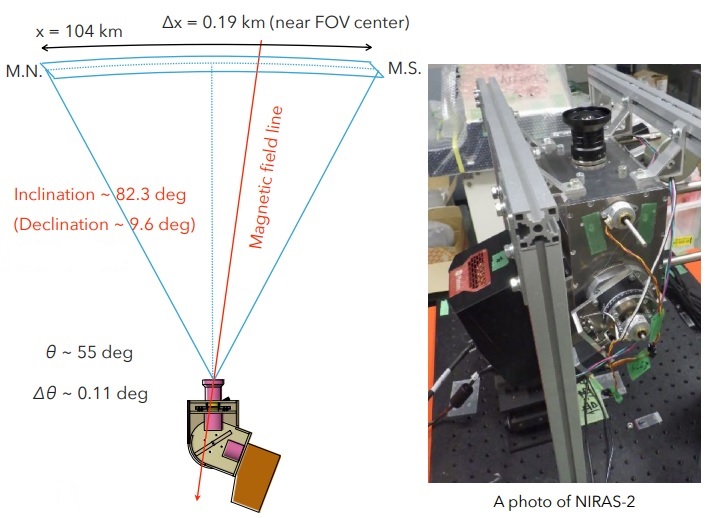| ☰ | Near InfraRed Aurora and airglow Spectrograph-2 |

Scientific objectives
Near InfraRed Aurora and airglow Spectrograph-2 (NIRAS-2):
The observation focuses on dayside magnetosphere-ionosphere-atmosphere coupling processes in the high-latitude
polar regions by challenging twilight/daytime aurora measurements at wavelength from 1.05 to 1.35 microns
in which sky background intensity is weaker than in visible wavelength.
For strong aurora emissions of N2+Meinel (0-0) band, NIRAS-2 can measure with 30-sec time resolutions.
The observation should be in close collaboration with EISCAT Svalbard radar observations of electron density variations
and in-situ measurements of energetic particle precipitation by LEO satellites such as DMSP, NOAA/POES and METOP.
In addition to aurora, OH airglow is also measured with good quality, and rotational temperature can be estimated with 10-min resolutions and errors less than 5 K. The following scientific goals are going to be addressed: dayside reconnections and wave-particle interactions monitored by auroral emissions, energetic particle precipitation impacts on OH chemistry in the upper mesosphere, atmospheric waves variability, and its connection to ionospheric disturbances in E-F regions.
Owner: National Institute of Polar Research, Japan (NIPR)
Contacts
PI: Takanori Nishiyama
Address: National Institute of Polar Research Japan
10-3, Midori-cho, Tachikawa-shi, Tokyo 190-8518
JAPAN
E-mail: nishiyama.takanori@nipr.ac.jp
Instrument specifications
Fast optical system (Aperture F1.4)
Exposure time: 30 or 60 seconds
FOV: ~ 55 deg with resolution of 0.11 deg
Detector: Photon etc., NIR InGaAs
Slits: 30, 60, and 90 um (pinhole 15 um)
2 x Volume Phase Holographic Gratings: 950 and 1500 lpmm
FWHM: 0.53 nm and 0.21 nm with a 30 um slit width.
Target emissions
Aurora: N2+Meinel (0-0), N21st Positive (0-0) and (0-1), OI-
Airglow: OH (4-1), (5-2), (6-3), (7-4) and (8-5), O2(IR)